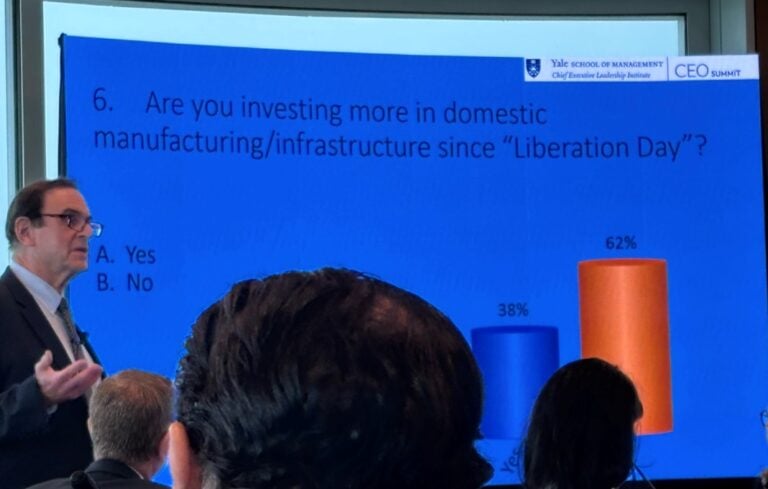
I have yet to enter a turnaround situation that I didn’t hear the owner or CEO or the board say that the answer to all of their problems is more money. While in some cases this is a real need, it is seldom the systemic problem within the company. Chances are that they have some work to do. Needing ‘dollars’ is one thing … being ready to raise ‘dollars’ is another.
There is an abundance of funding available in the marketplace for good deals. The key wording in this statement is, of course, “good deals.” When a company is in trouble rarely is it considered a good deal without some fixing.
Don’t be surprised when you come to the realization that the company isn’t attractive to investors or lenders. This means that you have the opportunity to rebuild the company, or parts of it, so that it can be considered a “good deal.” Build a company that investors want to invest in.
Buyers and Investors Look For:
Raising Capital
Once the company is rebuilding and perhaps restructured you are ready to raise capital. With technology available today the Internet can be a valuable resource to get in front of many interested investors. Approaching one investor at a time can be very time consuming. The risk of finding the right one early in the process is very high. Often the answer lies in casting a wide net to hundreds or thousands of investors to solicit interest.
Private equity funds use a ‘funnel approach’ viewing 1,000 deals to find 100 worth a deeper review, which result in one or two worth their investment. Lenders go through a similar process. Be either #1 or #2.
To present the company in the most favorable light the business operating plan must describe the opportunity to investors and what is in it for them. Why will they invest in you? To finance transition the plan must detail how you are fixing systemic problems and will use the funding for that purpose. Treat the potential investor as your audience where the product is your company.
“Your business plan is only as good as the intelligence and work you put into it and the uses that you make of it.”
The Business Operating Plan Includes:
Your business plan is only as good as the intelligence and work you put into it and the uses that you make of it. The plan must persuade your team and prospective investors that your concept merits their consideration and buy-in.
Think about it, no one wants their investment or loan to pay for past sins. The capital infusion must be used to take the company forward. Address in detail why the company got into trouble, how you are fixing the problems, and how the new capital will be allocated to these efforts. How do you plan to handle, preferably avoid old obligations while rebuilding the company?
Three Step Approach to Get Results and Money:
It is very important that the Overview, Executive Summary, Operating Plan, and due diligence all be prepared and ready, subject to revisions, before the Emerge process begins. When you attract an interested investor they will move very quickly. If you are not ready to respond immediately they will move on to the next opportunity in their funnel. Dedicate executives’ time and be prepared to schedule personal meetings to answer questions and close the deal.
Most turnaround specialists will have a list of investors and lenders who are looking for deals, some have longer more quality lists than others. These specialists can help the process of preparing the solicitation documents, perform the Emerge to locate investors, and negotiate the transaction.
The process of raising money is complex and time consuming. The Securities and Exchange Commission has rules governing how ‘Finders’ and ‘Broker/Dealers’ can operate, and what each can or cannot do. Working with a Broker is very expensive for small and mid-size companies and you lose some control. Working with a Finder is much less expensive; you maintain control, and prepare the documents. An outside director, as part of the company, can be a Finder to introduce you to investors and /or lenders – you then negotiate a deal that you can live with. When an outside director has a large database to utilize during this introduction process, measured in thousands of contacts, you can be in front of many investors. The key is to prioritize the flow of introductions and manage the diligence process.
Compensation for the money raising process varies by specialist, but there will be retainer and fees for preparing the process and a Finder’s Fee upon completion of the transaction. Most specialists will use a Modified Lehman Formula geared to the size of the deal. One example of a Modified Lehman Formula might be 7.5% fee for first $1.5 million involved in the transaction, 6.0% for next $1.5 million, 4.5% for next $1.5 million, 3.0% for next $1.5 million, and 1.5% fee for the remainder of the transaction. Because there is a similar amount of work to locating financing for smaller deals as there is for larger ones expect the percentage fee to be higher for smaller deals.
It is not hard to raise money if you put the right tools in place and the deal is investable. There is money available, just be the ‘good deal’ and you will raise capital.
Related: Can Startups Thrive Without VC Funding?




Chief Executive Group exists to improve the performance of U.S. CEOs, senior executives and public-company directors, helping you grow your companies, build your communities and strengthen society. Learn more at chiefexecutivegroup.com.
0

1:00 - 5:00 pm
Over 70% of Executives Surveyed Agree: Many Strategic Planning Efforts Lack Systematic Approach Tips for Enhancing Your Strategic Planning Process
Executives expressed frustration with their current strategic planning process. Issues include:
Steve Rutan and Denise Harrison have put together an afternoon workshop that will provide the tools you need to address these concerns. They have worked with hundreds of executives to develop a systematic approach that will enable your team to make better decisions during strategic planning. Steve and Denise will walk you through exercises for prioritizing your lists and steps that will reset and reinvigorate your process. This will be a hands-on workshop that will enable you to think about your business as you use the tools that are being presented. If you are ready for a Strategic Planning tune-up, select this workshop in your registration form. The additional fee of $695 will be added to your total.

2:00 - 5:00 pm
Female leaders face the same issues all leaders do, but they often face additional challenges too. In this peer session, we will facilitate a discussion of best practices and how to overcome common barriers to help women leaders be more effective within and outside their organizations.
Limited space available.

10:30 - 5:00 pm
General’s Retreat at Hermitage Golf Course
Sponsored by UBS
General’s Retreat, built in 1986 with architect Gary Roger Baird, has been voted the “Best Golf Course in Nashville” and is a “must play” when visiting the Nashville, Tennessee area. With the beautiful setting along the Cumberland River, golfers of all capabilities will thoroughly enjoy the golf, scenery and hospitality.
The golf outing fee includes transportation to and from the hotel, greens/cart fees, use of practice facilities, and boxed lunch. The bus will leave the hotel at 10:30 am for a noon shotgun start and return to the hotel after the cocktail reception following the completion of the round.